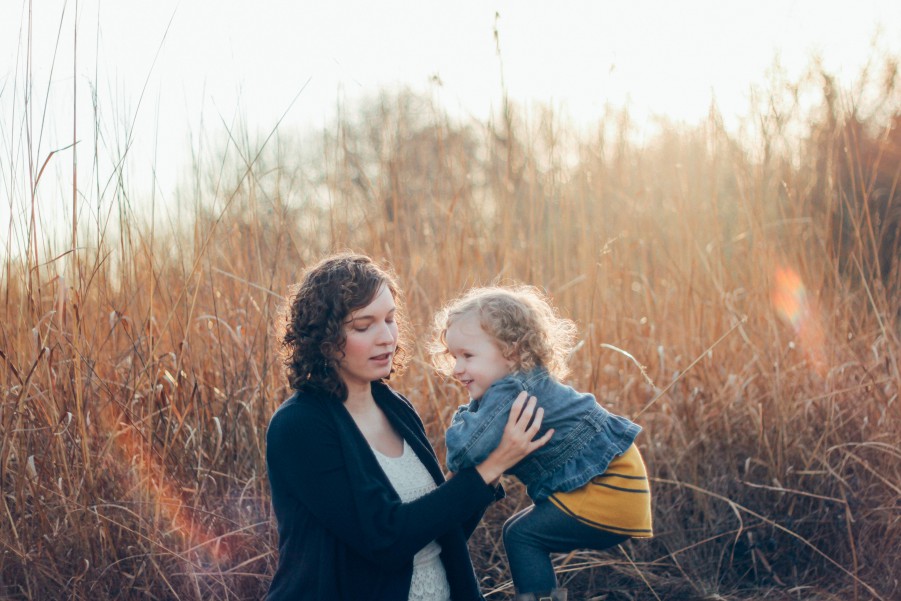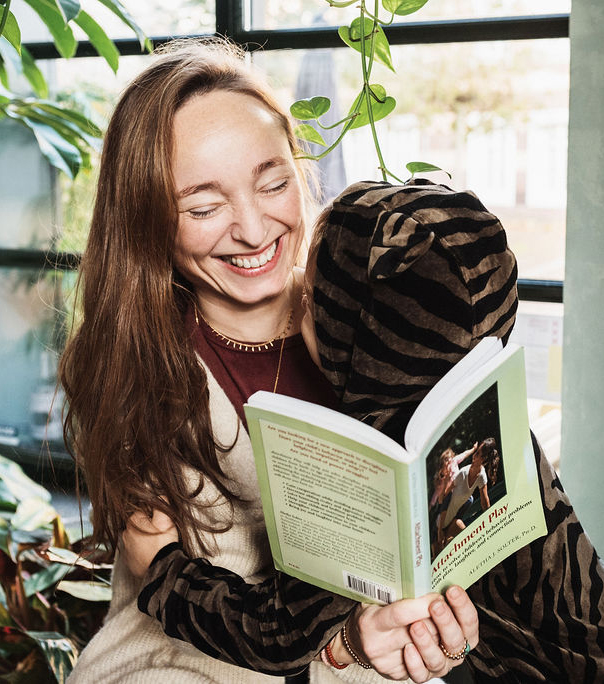Some say that you have to set limits by using timeouts, a strict voice, praise or giving rewards. Others claim that it’s better to leave children free since ‘borders will hinder’ them in their development. What is wise to do? And is there another way?
If our children are babies, it helps them feel securely attached to us when we respond to their signals. When they are hungry, to give food. When they pee, to offer a new diaper or the potty. If they want to be close, to offer a cuddle. This instills in them a deeply rooted sense of trust in themselves and in life.
But what as our children grow older? When they’re wanting their own autonomy, like during the so called “terrible twos”? Toddlers, children, teens that want to do their own thing, while you’re feeling confused. Do you still need to follow your toddler? When should you start setting limits and when not? Or is it better not to set limits at all? And..
WHAT ARE LIMITS anyways?
To answer all these questions, we must focus on the last one first and determine what limits are. The most obvious boundaries are those that keep a child safe. Think of not letting your child cross the street alone.
Less obvious boundaries are our own limits as parents. And then there are the limits of other people: not everyone needs to laugh heartily as your cute little angel is jumping on their brand new sofa “because this couch is so suitable for jumping.”
Furthermore our purse might be protesting at times and setting its own limits. General rules can also be limits; children should not drive our car on the highway or touch the paintings in a museum. And then there are medical boundaries, for example, like an allergy or a hole in the tooth. Everyday there are many limits. Have I forgotten any others?
Anyway, all around us are boundaries and limits. They are a natural part of our existence. And they do not have to stand in the way of the development of a child. But on the other side, limits and boundaries also don’t mean that we have to play policeman all day long.
Children can learn to deal with limits…
…if they get the chance. When children do not perceive any boundaries, they do not get to learn to deal with them because they have not experienced any limits to practice with. Later, growing up, they can therefore have more difficulty with accepting boundaries or find themselves struggling in how to deal with sudden limits.
On the other side, children who grew up with boundaries through penalties, timeouts, strict orders, rewards, disqualifications, etc. also fail to learn to deal with limits and boundaries. The emphasis they receive is on obeying the limit and not on the process of acceptance, questioning or reflection of those limits.
In both cases there’s little or no attention towards learning to deal with boundaries or rules. Therefore I’d like to choose a third option: setting limits, BUT without penalties, time outs, rewards, praise or made up consequences.
So how can we set limits?
According to psychologist Aletha Solter, Ph.D. there are several ways to set limits without timeouts, reward, praise or made up consequences, for example:
1. Physical border
Babies begin to understand the concept of rules around 21 months. So before that time, you can keep on repeating yourself endlessly without your child understanding. Until that time, but also after, you can set physical limits by keeping dangerous objects and fragile items out of reach of children. The advantage is that we do not have to cry “no” all day if our little one goes around exploring. That’s less frustrating for us as well as for our child and it has the advantage that our child doesn’t give up exploring the world because it has been so often forbidden.
Aletha Solter says: “This way you do not have to say no very often. By reducing the number of situations in which you have to say no, you can to some extent prevent the problem.”
2. Communication
Thomas Gordon talks about how we can communicate a limit with an I-message instead of a you-message: “I want you to go down the stairs, because if you do go on the stairs when the stove is hot, I can’t cook very well and I’m afraid I’ll accidentally knock you over with a hot pan.” This provides information about why you set a limit.
Gordon says: “When parents start using I-messages, they do not only find changes in their children; they also feel a major shift in themselves. I-messages have a liberating effect: they help express feelings instead of bottling them up.“
3. Play
You can also communicate limits using play! Make a joke about it. Think of something crazy. Setting limits doesn’t need to be serious all the time. Children, just like us adults, learn better when they feel happy than when they feel anxious.
Aletha Solter writes: “Attachment Play teaches you how to set boundaries in a way that inspires children to cooperate rather than to rebel.”
Yes!
I'm ready for more JOY and interested in staying updated about upcoming workshops in Chile!
4. Drawing up the rules together
Do you involve your child in finding solutions and drawing up the rules in your home? Thinking together about them and seeing what works for everyone can be very satisfying. It also increases the likelihood that the rules are respected and allows you to be less of a policeman. Find solutions together. You will be amazed!
5. Loving limits
A loving limit is setting a limit combined with empathy, giving space for the emotions that come up in a child. It is through emotional processing that there may be room for acceptance and understanding of boundaries.
All in all…
Borders are part of life, and contrary to what you might often hear around you, there are other ways to set them and deal with them. You can help children lovingly to deal with this.
Learn more?
Then download the free guide below or join the free workshop!
The secret language of PLAY
WORKSHOP
Bring more joy into your parenting!
(without punishments or rewards!)


Do you want parenting support?
About the author:
Hi! My name is Chris Muller, MSc, BTA. I am a psychologist, counselor in Transactional Analysis, Aware Parenting instructor (level 2) regional coordinator the Netherlands and mother. For 10 years I provide support to parents through training, the Aware Parenting Education and 1-on-1 guidance. With a lot of love I help you to treat children AND yourself with love and respect. It is my passion that you experience more joy and more connection with your child AND with yourself! X
Free Bookguide
12 tips + explanation
for almost all parenting struggles
without time-outs, rewards or sleeptraining
Would you like to receive my Free Book Guide?
Would you like to receive free tips & updates by email?
Then fill in your email!
Photo by Shelby Courtney



